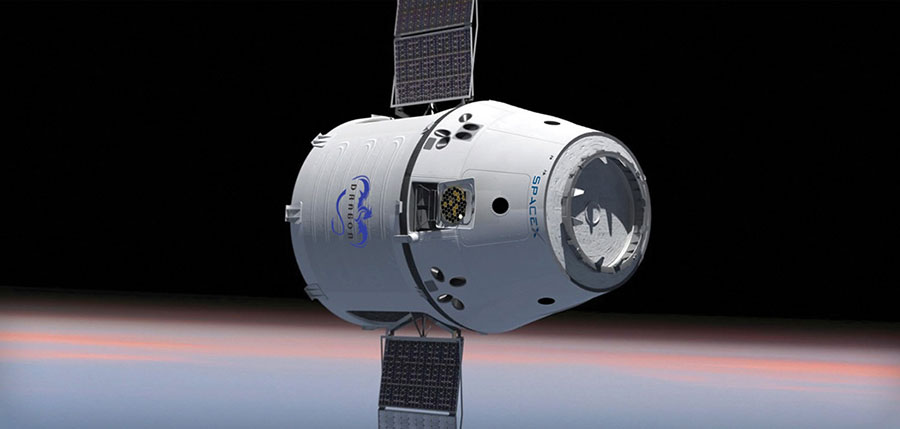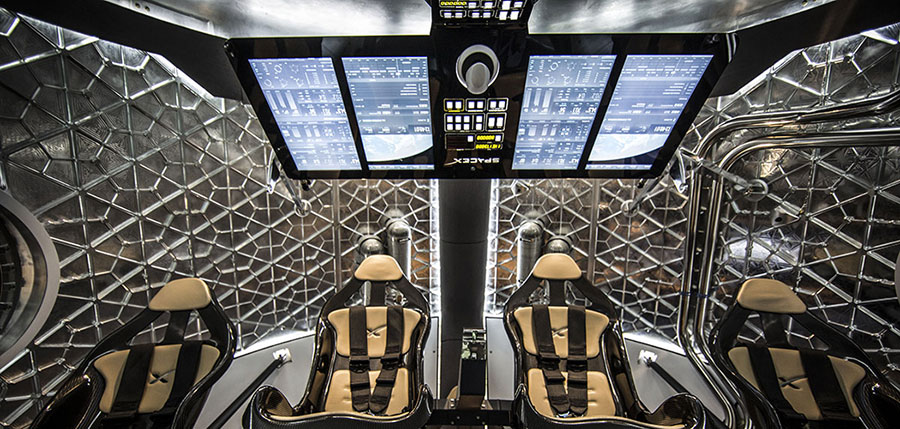The unmanned SpaceX Dragon cargo capsule is starting its journey back to earth on Thursday, from the International Space Station, holding dozens of experiments and cargo, among which there are 12 mice.
The space capsule was released using the International Space Station’s robotic arm. It is expected to land on the Pacific Ocean, between California and Mexico. The spacecraft will be retrieved by SpaceX and its arrival will be broadcast by NASA TV. SpaceX’s Dragon initially arrived at the ISS on July 20, bringing scientific material and supplies to the six astronauts residing in the station.

It also delivered new docking ports to be employed by newer capsule models developed by Boeing and SpaceX, as NASA has chosen to focus its efforts on exploring Mars. The main reason why SpaceX’s Dragon is so important is because it is able to return objects back to earth for analysis.
Researching frequent and sustainable space travel
The 12 mice were sent to live in space for a month in order to survey any changes in the DNA of their organs. Their offspring will also be analyzed, in order to assess possible changes in DNA formation while the parent organisms have been residing in space for a long time.
Scientists already know that zero gravity affects the heart of astronauts, making them spherical and forcing them to lose muscle mass because the organ produces less force as it has to deal with a lesser amount of pressure. These changes can be lethal when the astronaut returns to earth, so it is important to assess measures that can reverse the process.
The spherical transformation of the heart seemed to be temporary, as the heart of astronauts returned to their original shape after they had come back to earth, but it was accompanied with them feeling lightheaded and frequently passing out, due to the differences in blood pressure. Tachycardia is also common for returning astronauts joined with an increased heart muscle mass that makes it harder to pump blood along the bloodstream.
The installation of the new docking port is also important. Beforehand, only Russian spacecraft could dock ships directly in the space station. Any cargo directed to the American portion of the ISS had to be grappled with a robotic arm by the residing crew. The new docking ports are known as International Docking Adapters, which are built following an international standard that will allow newer models to dock by themselves on the International Space Station.
SpaceX and Boeing are the two companies that are working alongside NASA to develop more efficient transport for astronauts to the ISS. The American side of the station had two large docking segments that allowed the space shuttle to dock, but they are no longer usable.
The Dragon space capsule has accomplished a great number of goals for facilitating space transportation. It is a solar-powered spacecraft that is able to carry over 3 tons of supplies into orbit. As it is headed back down to earth, it boasts its full capacity in scientifically-relevant cargo, as any other space capsule was considered disposable due to its inability of returning safely to earth.

SpaceX will bring space exploration to the next level
SpaceX is signed to perform at least 12 cargo missions to the ISS, making its first successful trip in 2012, becoming the first commercial unmanned spacecraft to visit the installations. Its first-ever test flight was a mission to carry a wheel of cheese into orbit, but the cargo was not revealed until the spacecraft had returned back to earth.
SpaceX’s CEO Elon Musk aims to develop space exploration to new horizons. He also is looking forward to being the first entrepreneur to send an astronaut to space. Musk has suggested that mankind must become a multi-planetary species for it to survive, which is why he has taken the task of putting most of his efforts towards sustainable space exploration, developing rockets that can be launched multiple times and in establishing new spacecraft construction standards.
In September, Musk will be revealing his plan on how to send humans to Mars at this year’s 67th International Astronautical Congress in Guadalajara, Mexico, which runs from the 26 to the 30.
Musk will elaborate on the structures and technologies that will be needed to effectively colonize Mars, so governments, scientists, and industry magnates can plan ahead and take part in a process that will involve the evolution of mankind by surpassing our home planet’s frontiers. Musk has already talked about sending a Red Dragon spacecraft to Mars in 2018, which could subsequently send humans to its surface.
One of the main issues appears to be fuel, as the solution may be to mine for it on the Martian surface. SpaceX researchers are looking into using electric propulsion for navigating space, in order to save most of the combustible fuel for the return trip.

“The future of humanity is fundamentally going to bifurcate along one of two directions: either we’re going to become a multi-planet species and a spacefaring civilization, or we’re going to be stuck on one planet until some eventual extinction event. In order for me to be excited and inspired about the future, it’s got to be the first option,” stated Elon Musk on National Geographic.
Source: Space
